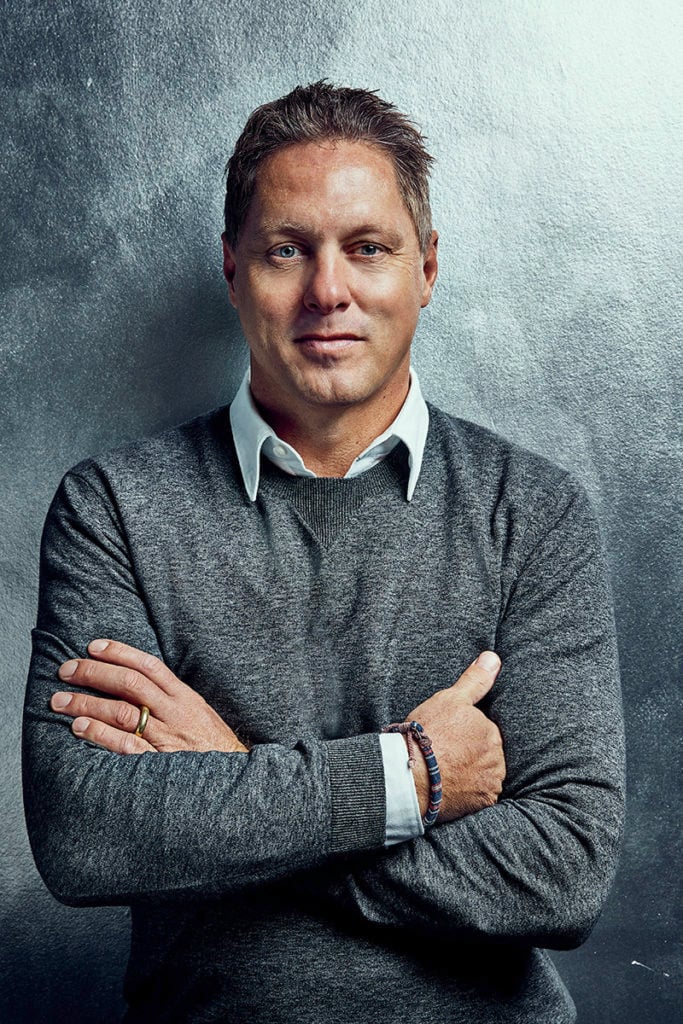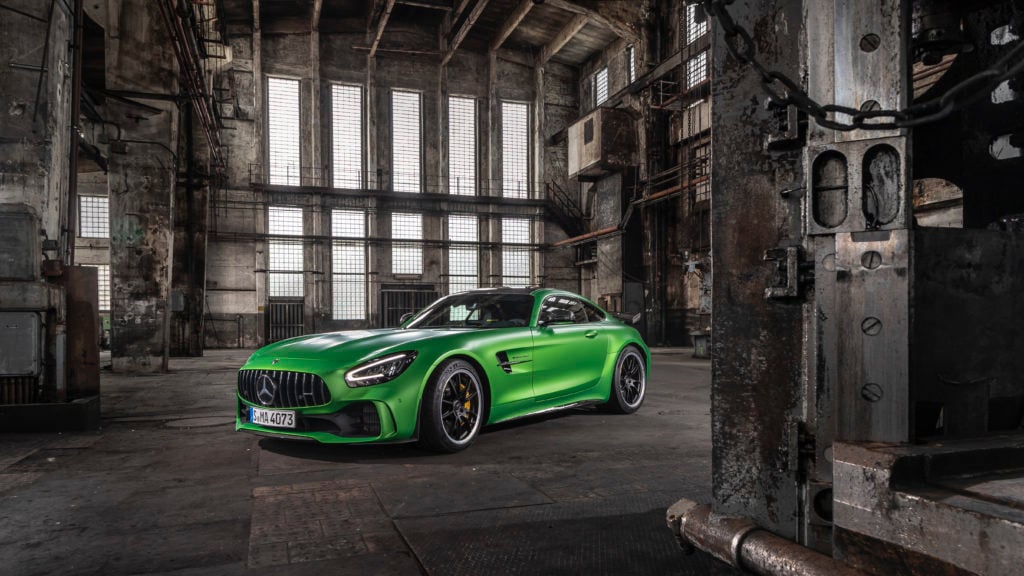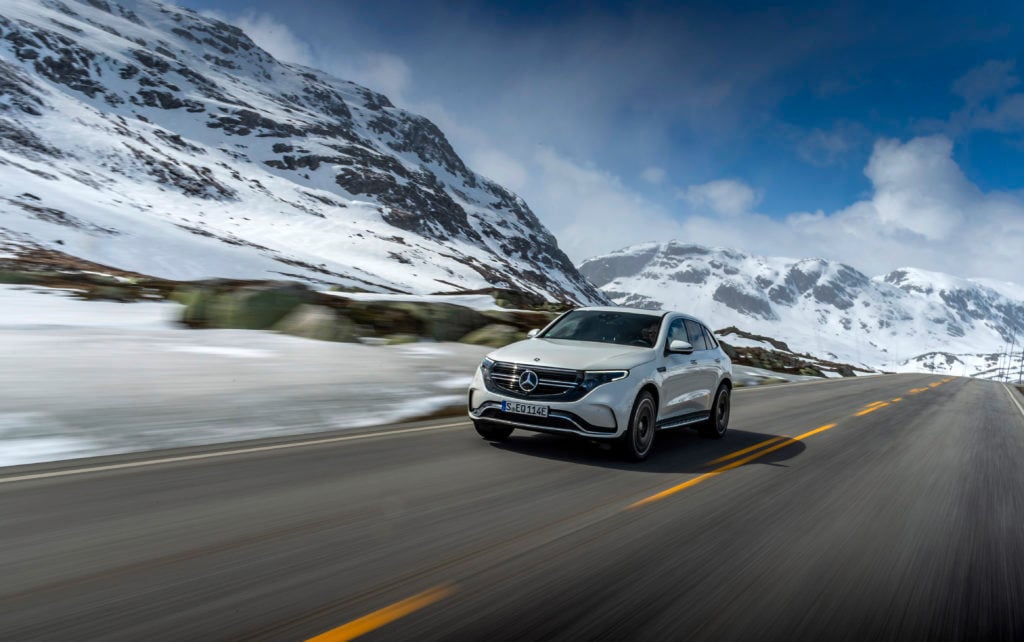People
‘I’m Obsessed With Creating Icons’: The Design Visionary Behind Mercedes-Benz on the Art of Car Design
Gorden Wagener talks going from professional surfer to car designer, rendering ideas in oil on canvas, and the future of the auto industry.

Gorden Wagener talks going from professional surfer to car designer, rendering ideas in oil on canvas, and the future of the auto industry.

Chris Shott

Gorden Wagener, Chief Design Officer for Daimler AG, likes to say that he’s living in the future. “There’s a different time zone within our design department,” he explains. “You have to fast-forward your watch at least five to 10 years.”
Wagener has been plotting a vision for the future of Mercedes-Benz and other Daimler car brands since taking over the German automaker’s top design job in 2008. At the time, he was just 39 years old—the youngest head designer in the industry—and tasked with revitalizing the oldest car brand on earth.
Eleven years later, Wagener’s vision has been realized in a new design philosophy he calls “sensual purity,” the basic idea of which is to design cars that appeal to both your head and heart. Its results are striking: the modern-day Mercedes, as we know it, is streamlined, sporty and curvaceous, a sweeping upgrade on the stately saloon of yesteryear. Wagener’s most beloved car design to date, the voluptuous Mercedes-AMG GT sports car, was recently spotlighted on the popular Showtime TV drama Billions, with acclaimed actor Damian Lewis promptly remarking, “I’ll take two”, after laying eyes on it. (The car is priced at $132,700.)
Sportiness is a big part of Wagener’s ethos in general, too. Before he began a career in car design, he dreamed of becoming professional surfer and applied his artistic instincts to designing surfboards. Ultimately, though, pivoting from primitive watercraft to sophisticated road vehicles came naturally to Wagener, who went on to join the prestigious car design program at London’s Royal College of Art. “A surfboard is a very sexy shape,” Wagener tells me. “A car is not much different.”
Now, over a decade into his tenure, Wagener continues to push the venerable Mercedes brand forward. Earlier this year, the company rolled out its first ever all-electric car, the Mercedes-Benz EQC, a very sleek, aerodynamic-looking SUV that’s outfitted with high-tech voice controls and various other state-of-the-art features. “It’s more clean than clean— it’s seamless,” Wagener says. “Like a smartphone.”
Yet despite his modern sensibilities, Wagener still prefers to begin every new car design the old-fashioned way: with a hand-drawn sketch. “You can do that on an iPad these days, but still it makes a difference if you have a piece of paper and a pen,” he says. “This is what we aim for: to create something that has a certain feeling. A lot of the process, when we digitize it, render it, put it into clay, or a virtual model, is all about catching that feeling from the very first sketch.”
Below, Wagener spoke to artnet News about the art of car design, bringing Daimler AG into the future, and of course, surfing.

The Mercedes-AMG GT. Image courtesy Daimler AG.
What role did art play in your early growth and evolution as a designer?
When I was young, I liked to draw. That was kind of the reason I went into design because of the artwork aspect. The good thing with design is, it doesn’t stay two dimensional. You create the key sketch—the art piece that captures the flavor and feeling—but then you need to translate that into three dimensions. We start with artwork, but then from there, you always have to be able to turn it into a piece of design that is still as desirable as art, but of course is a product that embodies all these different aspects, and is something that people can buy in large numbers.
What kinds of art forms do you look to for inspiration when creating a new car design?
Human beauty, first of all, is the best inspiration for our work. We try to capture human beauty. That’s what many artists have tried to do over the centuries. That’s what we try to transform into the skin of our cars. Also, I still love to paint with oil on canvas, mostly cars. My office is not an office—it’s an atelier. I keep some solvent, oil paint, and a couple of brushes laying around, so I’m always ready to start a new painting. My office has probably around 20 oil paintings, finished ones and unfinished ones. Whenever I have a free moment, I grab the brush and continue working until I have to go to the next meeting.
How do you describe your design philosophy of “sensual purity” to a layperson?
It is very easy to understand, a totally human philosophy, because it’s about the two opposites: heart and brain, intelligence and emotion. We call it hot and cool. So we try to create something that is super beautiful, sexy, alluring, on the one hand. The other part is the the intellectual thinking process. You look at something and say, “Wow, this is cool”, because it’s modern, because you haven’t seen it before. That’s what people mean when they say something is cool: that there’s something new about it. This is, in a nutshell, the base for everything we do, whether it’s a car, an advert, a showroom, or a sculpture.
Tell us about your favorite car design so far, the Mercedes-AMG GT. What makes it so appealing?
Sport cars were always my favorite design projects. They embody pure dynamic. Their front is like a raptor and their sideline like a big cat before he pounces. All its lines are powerful. You can see and feel the raw energy sports cars have below the bonnet. A wise man once said, “The last car ever built will surely be a sports car.” I hope that he was right, and that I am the one who designs the very last one, no matter what engine it has. The GT is pure emotion and fascination, and, like every designer, I’m obsessed with creating icons. With the GT, I got close. The media called it the next “sports car icon” from Mercedes. That is what makes the GT so special for me and, believe me, we’ll try to make the next sports car even better. The GT makes you lovesick. If you ever drove one, you’d know what I mean, and that was my intention.

The Mercedes-Benz EQC. Image courtesy Daimler AG.
How do you see car design evolving over the next decade?
It’s a super interesting time as we’re changing the car more now (and in the next 10 to 15 years) than we have in 130 years of car history. We are making significant changes through CASE [Mercedes’ initiative standing for “Connected, Autonomous, Shared & Services, and Electric”] digital transformation. It’s a great experience to sit in the driver’s seat right now, because without design, technology is nothing. Design transforms technology into, in our case, a luxury experience. We give it life. Car design right now is almost like the Renaissance. It will get more and more complicated as we have more and more specialists working together, from the classic fields like sculptors, exterior designers, interior designers, fashion designers, to user-interaction designers, software designers, coders, and gaming designers. It’s like an orchestra. They all have to work together in order to play a symphony.
How is electrification impacting car design overall and Mercedes-Benz in particular?
The electric platforms are a great opportunity to create something completely different, to build a different house than before, a very modern progressive house. The key, in design, is proportion. So whatever architecture we are talking about, whether it is combustion or electric, we make sure it’s done right, with body relations, overhang proportions, where the cab sits, whatever it is. And that allows us to go into reduction. Our motto is: If we like it, we take a line off. If we still like it, we take another line off, until we have something that is essential and clean and pure.
All this electrification will first run on our new Mercedes EQ brand, which is kind of our new startup that embodies the progressive luxury of tomorrow. We are just now launching our EQC. It’s very futuristic and different. We decided to start electric in the mainstream SUV segment like our GLC; it’s a very popular segment of ours. We reduced the body even more, but we keep it very sporty and sexy. Of course, we will then go into other segments, then eventually come out with something even more radical.
If you were not a car designer, what would you be doing instead?
Probably (and hopefully) a professional surfer.
Do you still get time to surf?
Sometimes, yeah [laughs]. Being out there in the ocean is like the most beautiful thing on the planet.